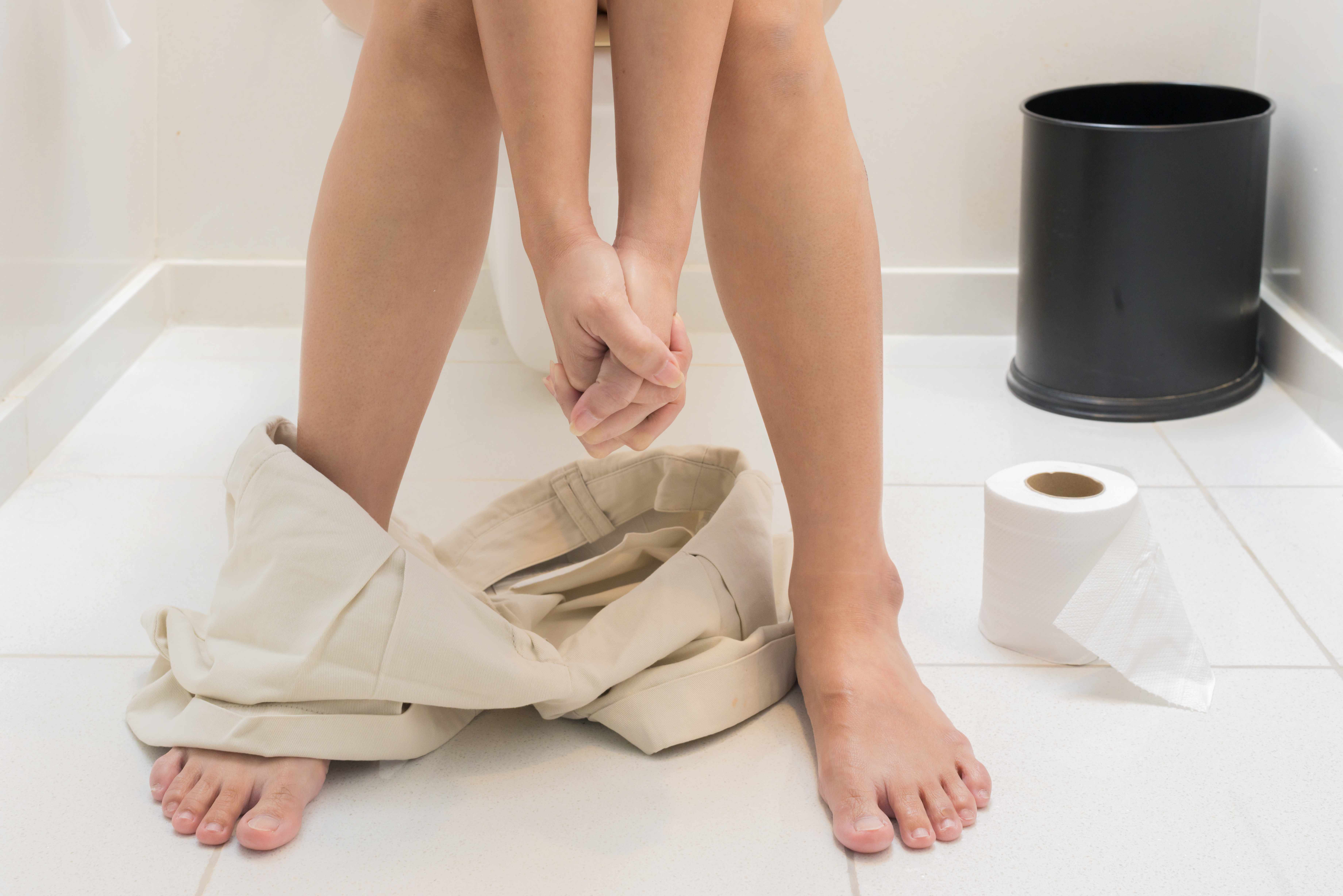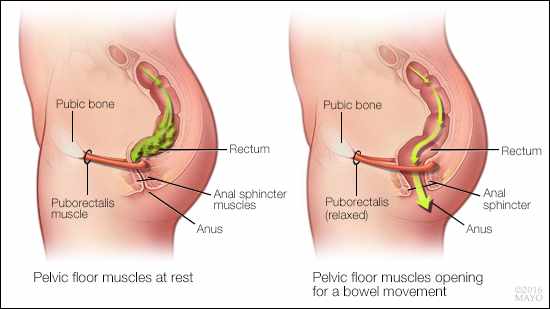-
Women’s Wellness: Solving pooping problems without medication

Constipation can be a serious health issue, but is most often an embarrassing and taboo topic of discussion. Millions of women and men suffer from some form of constipation and while there are over-the-counter medications, there can be other ways to relieve and even eliminate the problem. The article below was written by physical therapist Laura Meihofer for Mayo Clinic's Office of Women's Health.
___________________________________________________
Your health care provider has diagnosed you with constipation. Or maybe you notice that you have been having fewer than three bowel movements per week, passing hard, lumpy or dry stools, straining excessively, or experiencing pain with bowel movements. You are probably wondering what to do next. You have seen commercials or advertisements for products to treat constipation. But did you know there are some simple lifestyle changes you can do yourself?
Watch: Laura Meihofer discusses treating constipation without medication.
Journalists: Sound bites with Laura are in the downloads.
Here are five simple suggestions to help you relieve or even eliminate your constipation:
1. Drink plenty of water
As food passes through your digestive system and is processed, liquid is drawn out. 1 If you consume food that does not have a high liquid content or you do not drink enough fluid throughout the day, hard, dry stools. 2 When you are properly hydrated, less fluid is absorbed during digestion — allowing for softer stools.The Dietary Reference suggests adults drink between 91 and 125 fluid ounces (2.7 to 3.7 liters) of water per day. 1,3 This recommendation includes not only drinking water but also the fluid contained in other beverages and food. Food accounts for 20 percent of your total water intake per day. It is important to note that there are many factors that affect the right amount of fluid for you, including your weight, level of exercise, age, climate you live in, current health conditions and whether you are pregnant or breast feeding. 1 If you are adequately hydrated, you will rarely feel thirsty and your urine will be colorless or light yellow.
To stay on top of hydration here are a few helpful tips:
- Drink a beverage with and in between every meal, as well as before and after exercise
- Drink fluid whenever you feel thirsty
- Choose fluid-dense fruits and vegetables such as spinach and watermelon
2. Eat enough fiber
Dietary fiber is the portion of plant-based foods that is indigestible and cannot be absorbed. Fiber can be found in whole grains, beans, fruits and vegetables5. It is divided into two subcategories: soluble and insoluble fiber. Soluble fiber dissolves in water, can help lower blood cholesterol and glucose levels. 6 For people who suffer from constipation, insoluble fiber is best. Insoluble fiber increases stool bulk and aids in the movement of material through the digestive system. 7 Foods high in insoluble fiber include whole-wheat flour, wheat bran, nuts, cauliflower, potatoes and green beans.
The National Institute of Medicine recommends a daily fiber consumption of 25 grams for women under age 50 and 21 grams for women over age 50. Men under age 50 should consume 38 grams of dietary fiber, whereas men over age 50 should aim for 30 grams8. Increase your fiber intake gradually to make sure your digestive system tolerates the change, and don’t forget to drink plenty of fluids.
Here are some helpful tips to increase your intake of dietary fiber:
- Keep a fiber log to identify which meals or snacks would benefit from added fiber
- Switch to whole grains
- Add a serving of fruits or vegetables to each meal
3. Get enough physical activity
Aerobic activity — the use of large muscles groups for at least 10 minutes — helps fight constipation. 9 Exercise helps with digestion in several ways, including promoting the movement of food through the intestines and improving blood flow to your gut.
The U. S. Department of Agriculture (USDA) suggests a minimum of 150 minutes each week of moderate aerobic physical activity or 75 minutes of vigorous aerobic physical activity. This time should be spread out over at least three days. In addition the USDA also recommends strengthening activities, such as pushups, situps or lifting weights at least two days per week.10 An easy guide to determine your activity level is to assess your ability to hold a conversation. For moderate levels of activity, you can typically say a few sentences, but for vigorous levels, you can only say a few words at a time.
Helpful tips:
- Walk for 10-20 minutes at a conversational pace after dinner.
- Choose aerobic activities that you enjoy.
- Recruit a friend to exercise with you or share your goal of daily movement with your family so that they can encourage or join you.

4. Relax
Many patients with constipation have increased levels of stress and often report symptoms of anxiety and depression. 11,12 Stress may adversely affect your body in many ways. When you are stressed, your body’s ability to digest food is decreased. Having a bowel movement depends upon your body’s ability to coordinate and integrate information between the brain, organs and muscles13. Stress overrides and blocks these communication loops and puts the body into a fight-or-flight mode. While this stress response is helpful in certain circumstances, it can be harmful if present all the time, and may impact your ability to pass a bowel movement. 11
Helpful tips for relaxation:
- Practice diaphragmatic breathing. Focus on slowly drawing the air in through your nose as if you are smelling a beautiful flower and then slowly blowing the air out as if you are trying to make a candle flicker. Try to lengthen your inhale and exhale to 5-8 seconds each. Practice this throughout the day and while you are trying to have a bowel movement.
- When you are feeling stressed or overwhelmed, choose a word or phrase to help redirect your thoughts such as “relax,” “I can do this” or “I am capable.”
5. Answer nature's call
In order for you to have an urge to have a bowel movement, there are a few things that must occur. First, the rectum — the final place stool resides prior to leaving your body — is sensitive to stretch. When stool collects in the rectum, you perceive the sensation to void. Continuously suppressing the urge to have a bowel movement will dampen and eventually turn off this important cue.14, 15 Without knowing that you have to have a bowel movement, stool may stay in your intestine longer, becoming harder as more water is absorbed with time. If you try to have a bowel movement without an urge to evacuate, your muscles may contract instead of relax, which leads to dysfunction of the pelvic floor muscles.
Helpful tips:
- Try to have a bowel movement at the same time every day
- Find a private bathroom if you are anxious about using a public bathroom
- When you have the urge to have a bowel movement, stop what you are doing and go the bathroom. Sit down, use your deep breathing exercises and try to have a bowel movement. If you are unable to pass a bowel movement after five minutes or so, try again later when you have another urge.
Constipation can be a troubling condition and often has multiple contributing factors. If you continue to note constipation even after incorporating these five suggestions or if you experience bloody stools or unexplained weight loss, see your health care provider. Write down which remedies you have tried and for how long so that your provider has a clear picture of the issue and he or she can help determine the best treatment plan for you.
Related posts about constipation:
- Women's Wellness: Why can’t I poop?
- Constipation is Often a Preventable Emergency
- Constipation in children
#######
- Nutrition and healthy eating. Water: How much should you drink every day? - Mayo Clinic. http://www.mayoclinic.org/healthy-lifestyle/nutrition-and-healthy-eating/in-depth/water/art-20044256. Accessed December 27, 2016.
- Constipation in infants and children. MedlinePlus Medical Encyclopedia. https://medlineplus.gov/ency/article/003125.htm. Accessed December 27, 2016.
- Otten JJ, Hellwig JP, Meyers LD.DRI, dietary reference intakes: the essential guide to nutrient requirements. Washington, D.C.: National Academies Press; 2006.
- Water Rich Foods. The Science Of Eating. http://thescienceofeating.com/2015/01/23/water-rich-foods/. Published 2015. Accessed December 27, 2016.
- What is Fiber? www.eatright.org. http://www.eatright.org/resource/food/vitamins-and-supplements/nutrient-rich-foods/fiber. Accessed December 27, 2016.
- Nutrition and healthy eating. Dietary fiber: Essential for a healthy diet - Mayo Clinic. http://www.mayoclinic.org/healthy-lifestyle/nutrition-and-healthy-eating/in-depth/fiber/art-20043983. Accessed December 27, 2016.
- University of Maryland Medical Center. http://umm.edu/health/medical/altmed/supplement/fiber. Accessed December 27, 2016.
- Dietary reference intakes for energy, carbohydrate, fiber, fat, fatty acids, cholesterol, protein and amino acids: panel of macronutrients, panel of the definition of dietary fiber, subcommitee on upper reference levels of nutrients, subcommittee on interpretation and use of dietary reference intakes, and the standing committee on the scientific evaluation of dietary reference intakes. Washington D.C.: National Academy Press; 2005.
- Orenstein BW. Exercising Constipation Out of Your Life. EverydayHealth.com. http://www.everydayhealth.com/digestive-health/exercise-and-constipation.aspx. Published January 2009. Accessed December 27, 2016.
- How Much Physical Activity is Needed? Choose MyPlate. https://www.choosemyplate.gov/physical-activity-amount. Published 2016. Accessed December 27, 2016.
- By Chris Iliades, MD. How Stress Affects Digestion. EverydayHealth.com. http://www.everydayhealth.com/hs/better-digestion/how-stress-affects-digestion/. Accessed December 28, 2016.
- Mayer EA. The neurobiology of stress and gastrointestinal disease.Gut. 2000;47(6):861-869. doi:10.1136/gut.47.6.861.
- Padoa A, Rosenbaum TY.The overactive pelvic floor. Cham: Springer; 2016.
- Ginkel RV, Buller HA, Boeckxstaens GE, Plas RNVD, Taminiau JAJM, Benninga MA. The Effect of Anorectal Manometry on the Outcome of Treatment in Severe Childhood Constipation: A Randomized, Controlled Trial.Pediatrics. 2001;108(1). doi:10.1542/peds.108.1.e9.
- Loening-Baucke V. Chronic constipation in children.Gastroenterology. 1993;105(5):1557-1564. doi:10.1016/0016-5085(93)90166-a.








